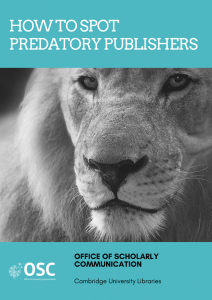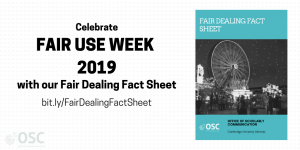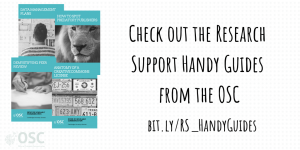Open Access is a powerful tool that enables researchers to share their research and maximise the impact of their work. However, the reality is that gold open access is a business model that is based on paying to publish, and it’s a business model that is primarily supported by research funders. What that means in practice is that gold open access often comes with a price tag that effectively excludes unfunded researchers.
The University of Cambridge has established a new institutional open access fund to provide financial support for unfunded researchers across the collegiate University. Researchers who do not have access to grant funds with which to pay the open access fees will be able to use the fund to pay the open access fees for their research or review papers in fully open access journals.
Professor Anne Ferguson-Smith, Pro-Vice-Chancellor for Research explains that:
“This is significant step in ensuring that all University of Cambridge researchers can opt for gold open access publishing. We are proud to establish this fund that will be especially beneficial to early career researchers as well as other researchers in the collegiate University who are not eligible for the open access funds that are provided by grant funders. Significant inequalities remain in the global scholarly publishing system, however, so we continue our commitment to support different open access solutions that are available to any researchers, both within and outside the University”.
The new fund is one of the many ways that the University helps researchers make their research open access and complements our many Read & Publish deals, the Rights Retention Pilot and the facilitation of green self-archiving in the University’s institutional repository, Apollo.
Who can use the new institutional open access fund?
Researchers who have a strong connection (typically research staff and students) with the University of Cambridge (including the Colleges) who have no way of paying for open access fees in fully open access journals.
What will the new institutional open access fund cover?
The fund can be used to pay open access fees for full research articles or non-narrative review papers in fully open access journals, provided there is no other way of paying the fee (for example, where there is no Read & Publish deal available to any of the authors, or where none of the author team has access to any funding).
How will the new institutional open access fund work?
The Open Access team can provide in principle funding decisions but cannot guarantee payment until a paper has been accepted for publication. Researchers are encouraged to seek an in-principle decision before incurring any fees by emailing the Open Access Team.
Where can I find more information about the new institutional open access fund?
There is more information on the Open Access website about the institutional fund, and the Open Access Team is available to answer any queries.
What about the bigger issue?
We are very conscious about the wider challenges with author-pays models of open access, for example for unaffiliated researchers and those in institutions without access to funding of this sort, and especially of the global equity issues that arise. We held several strategic workshops looking at these issues earlier this year and will continue to work towards finding a more equitable future for open access scholarly publishing.



